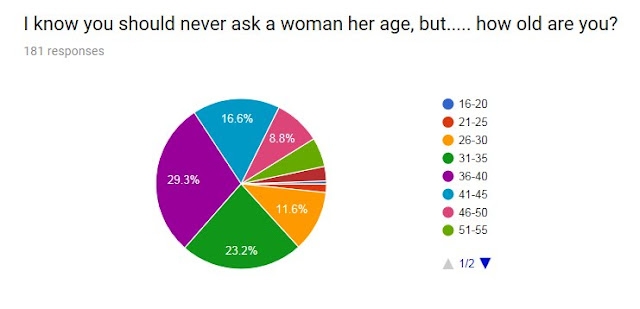When I go out for a run, my main objectives are not to pee or poop my pants (aka underwear or leggings, depending on where you are from. Either way- it wouldn’t be pretty.). Lots of planning goes into what I can eat in the few hours before a run. I prefer fasted runs first thing in the morning as the risk of uncontrollable bowel movements is minimized. With urination, it is a different story. Usually, I leak a little when I cough due to hay fever while running. This problem doesn’t seem to be as big an issue when a coughing fit strikes while I am on my bike. During another episode, I was climbing over a stile on a trail race when I felt a slight release.
 |
| Black leggings are good at hiding wet patches. |
I can never tell how much volume of urine actually leaves my body. It feels like an uncontrollable rush, which is mortifying. Questions like- “Will anyone be able to tell?” and “Does it smell?” go through my mind. When I finally get to the loo, it is always much smaller than what I originally thought. It just seems illogical that I have this issue. I have never given birth, nor do I suffer from chronic urinary tract infections. I am still on the younger side of 40, so why do I have the problem of sometimes urinating when I run?
Being a member of Run Mummy Run‘s Facebook group, I know this is a problem for many women. On the spectrum of severity, my problem isn’t bad at all. It doesn’t prevent me from being physically active and I don’t feel a need to wear an absorbent pad. But what I can’t understand is why women don’t talk about it more? As a creative problem solver, I decided to create a survey to help me gauge how much of an issue incontinence with running is and who women are turning to for help and advice.
First, I would like to thank everyone who took a few minutes out of their day to share their story with me and also those who shared my survey. You can see we had a variety of ages represented, as well as running experience.
One hundred and eighty one women and one man completed my survey. Only 25% of the respondents talk to someone about the problem (compared to 53% who keep it to themselves). Of the 98 people who answered why or why not do you talk to anyone about your incontinence problem and who if you do who, the majority said they were too embarrassed to speak about it. Another large proportion said that it wasn’t enough of a worry to bother talking to others. Those that do talk to others rely on family (mostly moms and sisters) and their running friends to confide in. I was surprised to see a few women didn’t’ know how to bring it up and another said it was “frowned upon” to discuss it in the spin community.
For those that answered my survey, 63% felt it was a minor problem that didn’t require any protection, while 23% wear thin liners or nappies. There where two big things that also stood out to me. First, that this problem keeps women from being physically active (33% in my survey will “occasionally” to “all the time” miss workouts because of their concerns). Other women purposely drink less on a run to avoid the issue. I would really advise against this, especially with the hot weather we have been having.
The second is that of the few women who were brave enough to bring this up with their general practitioner (GP, aka doctor in USA) (although I hate to use the word brave as you should be able to talk to your GP about anything. I acknowledge that this is a difficult topic for most though), the GP was dismissive. In my experience with the National Health Service (NHS), the doctors are too busy and too budget-aware to address things that don’t inhibit you from going to work. Perhaps if you have a good relationship with your doctor, they will recognize that this issue is important to you and make suggestions on how a solution can be reached.
Most women in my survey knew what kegals were and 99.8% knew what pelvic for was (maybe it was the man who didn’t). To ensure we are all on the same page, kegels (named after the doctor who first described them) are exercises that involve tightening and releasing the pelvic floor muscles. Both men and women can benefit from performing kegel exercises. The pelvic floor is a group of muscles at and across the bottom of your pelvis. It holds internal organs, such as bladder, bowel and uterus, in place. A strong pelvic floor can help you control urination, defecation, flatulence, and sexual function.
Reading a few comments from women who took part in my survey, it sounds like medical experts just see occasional incontinence as a fact of life after birth. Some women said you can ask for pelvic floor physical therapy through the NHS to get help. Over the years, women’s magazines report you can interrupt your urine stream when peeing to help strengthen your muscles “down there”. But as a personal trainer, I can’t see how that will work as the “sets” would be fairly short.
I have not yet given up all hope.
Recently, I was contacted by V-Sculpt to try out their pelvic floor toner and vaginal rejuvenation device. Sold exclusively by medical professionals, it is considered an authorized medical device. I have never used anything like this (or any “toy”) for that matter so wasn’t sure how this would go. It uses LED light therapy, gentle heat and vibration to help tone and health the vaginal cells and muscles. You can use it if you have an IUD (which I do) so I was good to go.
To start with, the V-Sculpt recommends six minutes a day of toning over a few weeks, building up to eight minutes and then ten minutes four times a week. I find I need to lay down to use the V-Sculpt so will check social media or read a book while sculpting.
Ten minutes a day sounded totally doable when I first agreed to try it out, but I am finding that it is still hard to fit it in. I need to put a reminder in my calendar or go to bed before my husband (who thinks this whole thing is hilarious) so I can be left in peace. Apparently, he has never felt the urge to pee or poop his pants while running and therefore cannot relate. Some guys get all the luck. After nine weeks of initial vaginal training, you just need to be on a maintenance plan of ten minutes one to two times per week.
I have been using the V-Sculpt once a week since I got up the nerve to charge it. It was a bit weird to ask, but in my survey 68.2% of the women have had or still do have a vibrator. Therefore, the V-Sculpt might not be awkward for them to try.
There is a photogenic gel which helps the V-Sculpt work more effectively. It is extremely runny and I welcome any advice on how not to waste it when applying to my V-Sculpt or myself.
Why did I agree to review this when I don’t usually talk about lady bits? The V-Sculpt does have a peer-reviewed study supporting its claims. I have nothing to loose and everything to gain from not worrying about peeing when running. Plus I want to help other women out there find a practical solution to this very common problem. I will be checking back as I get into a routine. It takes about three months to see results if you use the V-Sculpt every day. I can say my weekly sessions are not working in my favor so far but hope to better commit to my training program and post a follow up in a few weeks time with some good news.
Here is the user guide if you want to learn more about the V-Scuplt…..
Thanks to V-Sculpt for the complimentary vaginal toner. All opinions on the product are honest (probably way too honest) and my own.






Recent Comments